Countdown: Top Findings from 2021 Studies, Findings 10 Thru 7
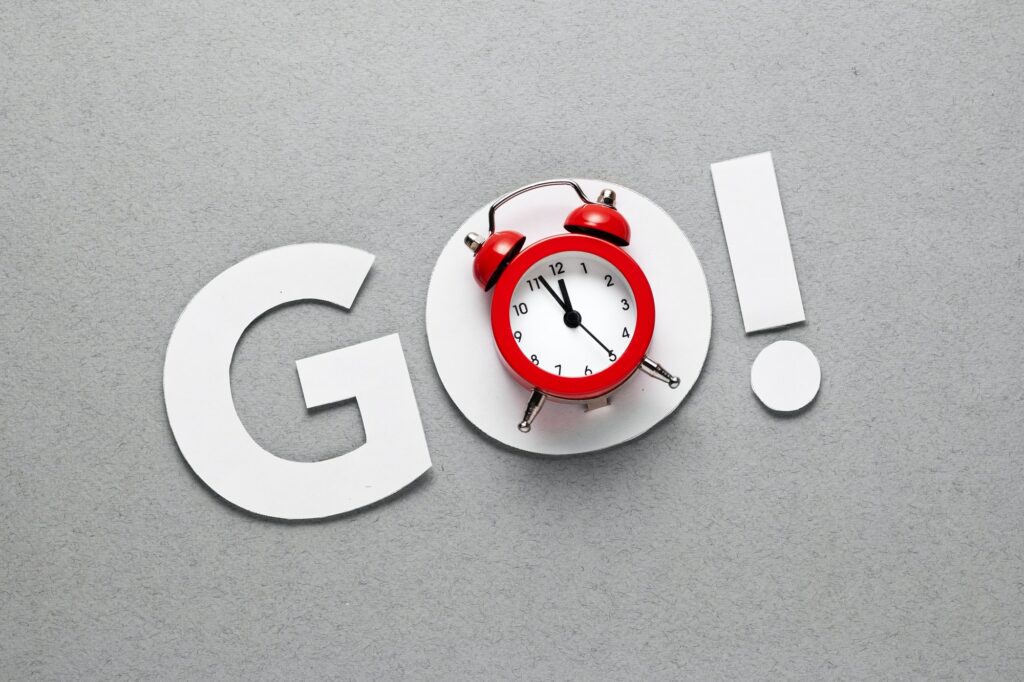
NuVoodoo Ratings Prospects Study 19 is in the field now. We’re looking forward to diving into the new data and sharing it with the industry in a free webinar in February. For now, let’s review the top findings from both NuVoodoo Ratings Prospects Studies conducted in 2021. This week, we’re sharing findings ten through seven.
Number 10: To make a dent in the ratings, the only people who matter are those who are likely to be in the Nielsen sample – and they’re a small fraction of total listenership. In our July 2021 study, approximately 19% of our already research-friendly sample screened in as likely ratings prospects, labeled “RPS Yes” below (and often referred to as “ratings likelies” by us). The most valuable subset of ratings likelies are those among the RPS Yes group who spend an hour or more every day with AM/FM radio. They account for 7% of this sample and are labeled “RPS 60.” These heavy listeners are the people who make or break station ratings.
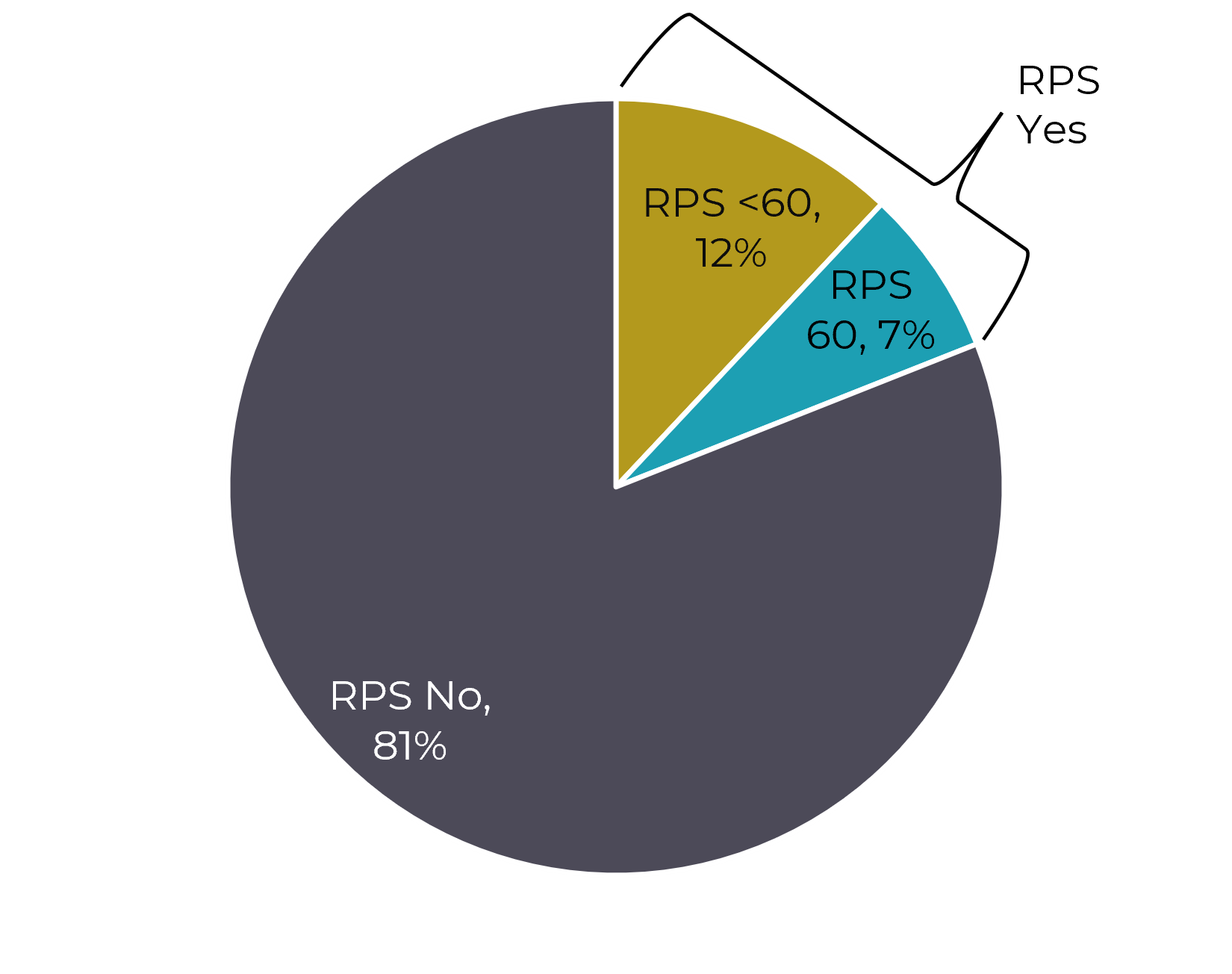
We’ve learned again and again that listeners become ratings respondents because of the money and rewards. Nielsen pays cash to ratings participants and both Nielsen and radio stations emphasize contesting to drive compliance and listening. So, it shouldn’t be a surprise that qualifying to win cash or a big prize falls a close second behind actual payments as motivation for being part of the panelist or diary keeping universe.
Of course, stations would go bankrupt attempting to pay every listener to listen, but contests are the way to impact those you REALLY need to connect with to move ratings: The TSL-heavy RPS 60 ratings likelies.
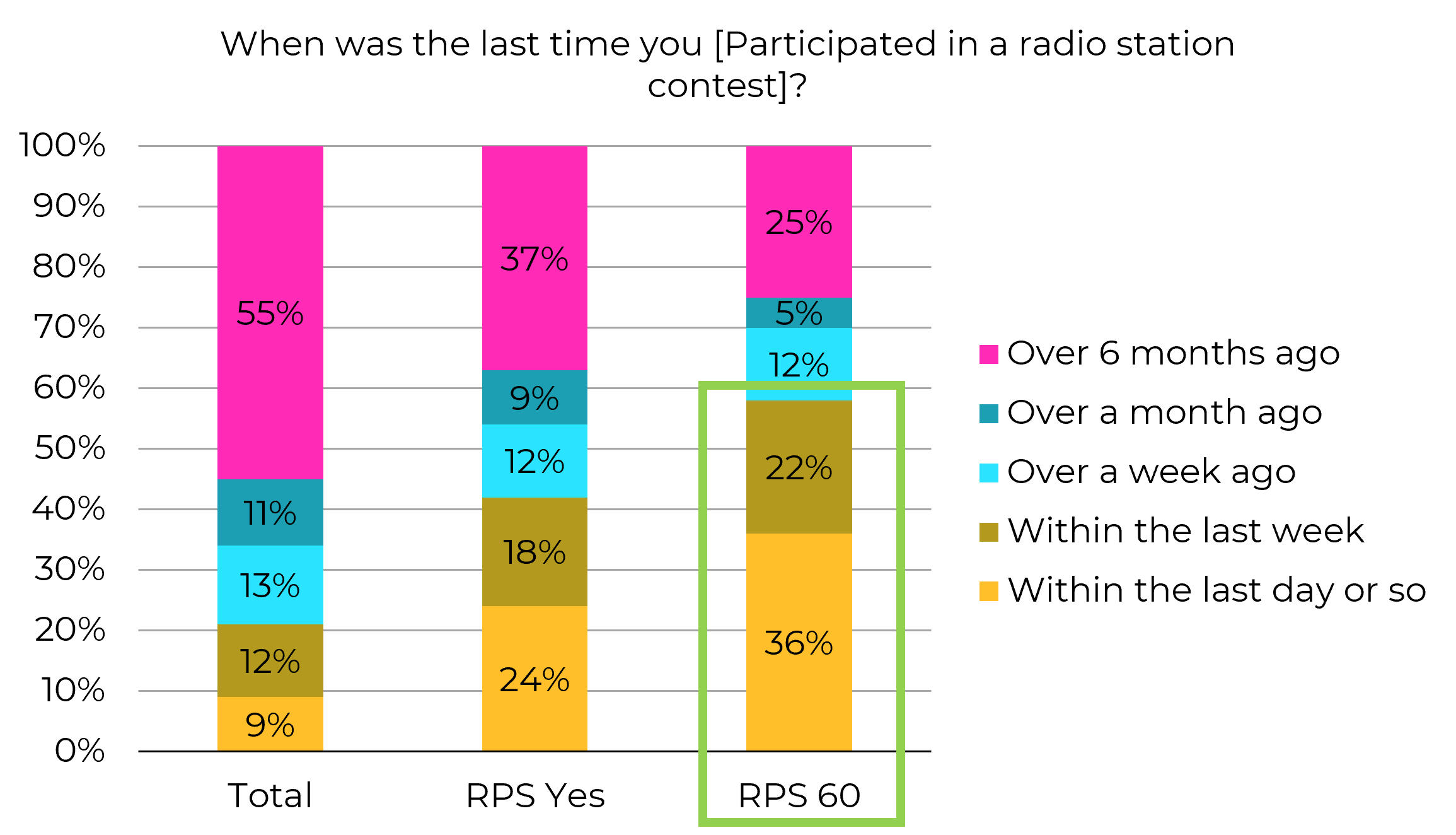
Almost 3 in 5 of the RPS 60’s say they participated in a radio station contest in the past week … and better than one in three say they’ve participated in the past day or so. This behavior dwarfs the reported contest participation rate among the overall sample. You’ll find more detail in a video here.
Number 9: Out-of-home listening yields higher levels of radio listening compared to at-home listening. Nothing illustrates the point better than when we study the TSL-rich environment of at-work listening.
This data comes to us from our July 2021 Ratings Prospect Study, and includes 1760 working-age adults. Among those working outside the home, broadcast radio is stronger not only compared to its own work-from-home numbers – but also compared to DSP’s (Digital Streaming Providers like Spotify, Amazon Music, Apple Music and Pandora ).
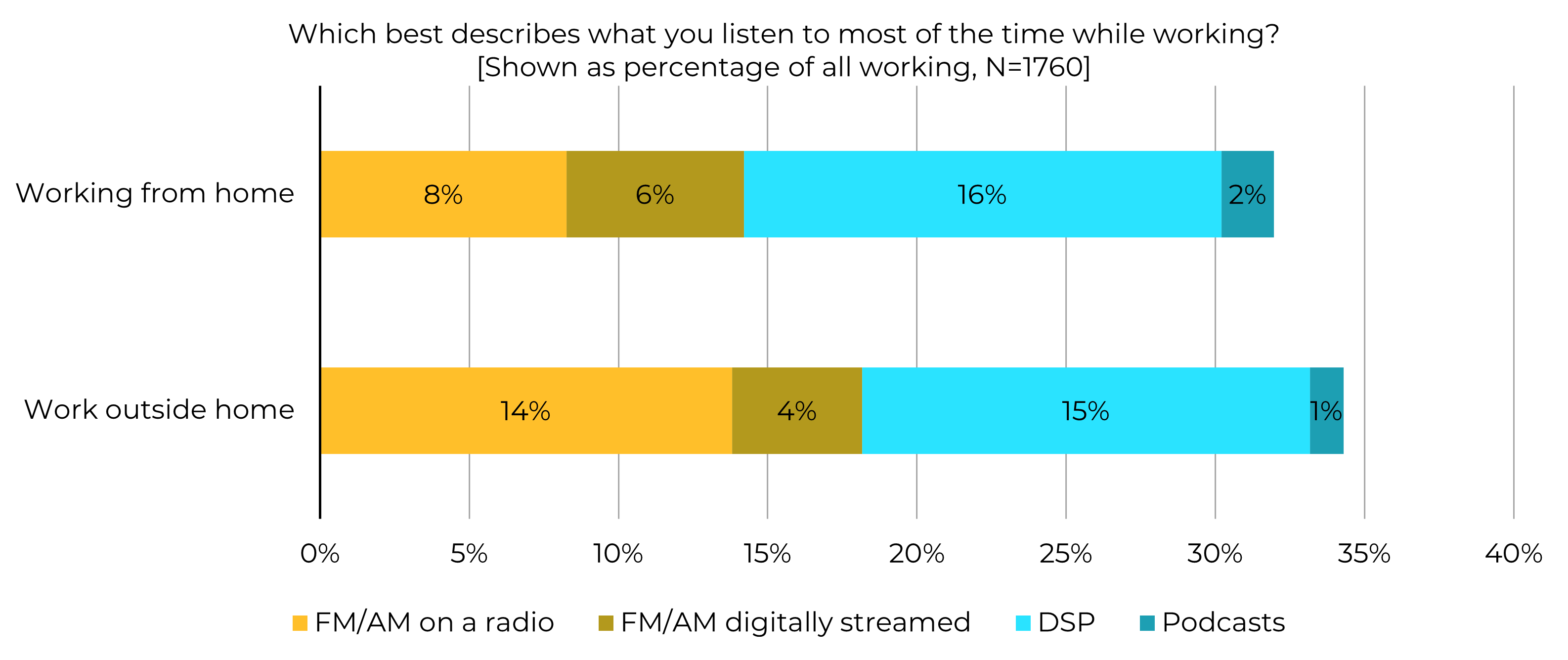
When you add up those listening on a radio – in yellow — and those listening to stations via streaming in green, radio competes with DSP’s among those working from home – but radio leads among those working outside their home. You’ll find more detail in a video here.
Number 8: Those likely to participate in the ratings are more audio – and radio – attuned and listen more no matter where the radio is located. About 2/3 of our sample tell us they listen to a radio in the car at least once every week. But when it comes to listening to a radio in any other location – at home or at the office, for example, weekly-or-better listening levels fall to less than 50% of our sample.

But, among the RPS Yes ratings likelies, better than 80% report at least weekly usage of a car radio and about 70% report that level of listening outside the car. You’ll find more detail in a video here.
Number 7: You need a Smart Speaker strategy for your brand. Our studies show Smart Speakers have continued to proliferate during the pandemic. Not surprisingly, RPS Yes ratings likelies are even more likely to have Smart Speakers than the overall population – and, they’re using them to listen to all sorts of audio – including broadcast radio streaming.
Among over 2,000 Smart Speaker owners in our July study, 30% had spent at least 30 minutes listening to an FM station on their device in the past week – and that jumps to 56% among the RPS Yes ratings likelies.
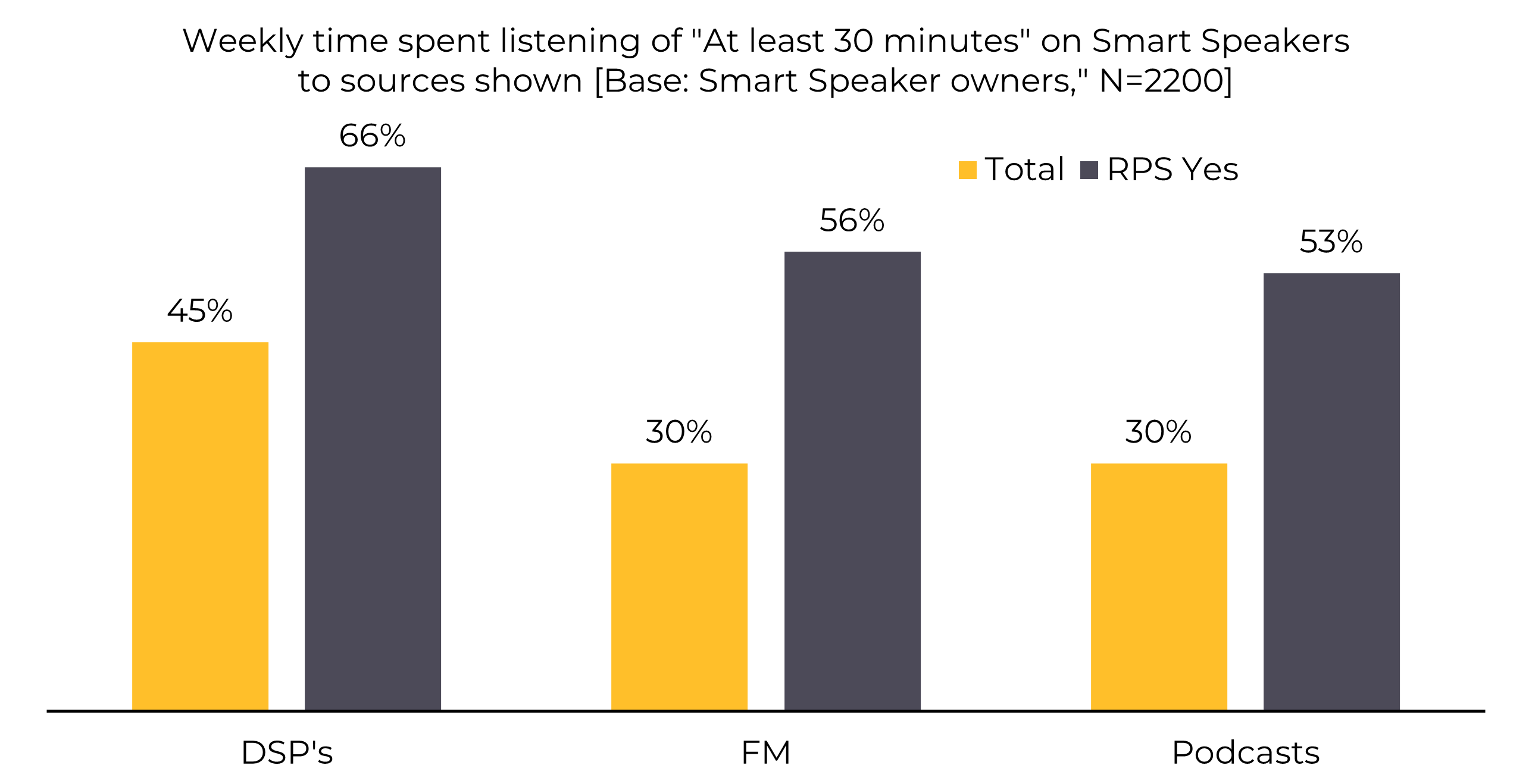
When you look at the placements for these devices in homes, it’s obvious that these are the new home radio devices for many people. You have an opportunity to replace the obsolete clock radio in bedrooms and get people to wake up with your morning show or put on your station while they’re entertaining at home. You’ll find more detail about Smart Speakers in a video here.
We’ll continue the countdown with findings six through four next week.




